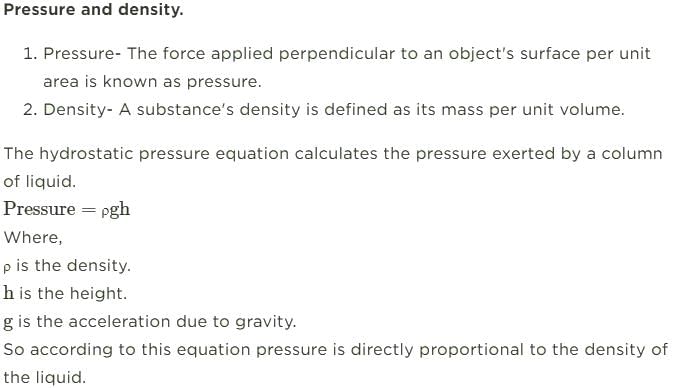Test: Pressure - SSC MTS / SSC GD MCQ
20 Questions MCQ Test - Test: Pressure
Which of the following factors does not affect the pressure exerted by a fluid?
Which of the following statements about atmospheric pressure is true?
When a person dives deep into a swimming pool, the pressure exerted by the water:
The pressure in a fluid is transmitted equally in all directions. This statement is known as:
Which of the following materials is most likely to exert the highest pressure?
The pressure of a gas inside a container is 2 atm. What will be the pressure if the volume of the container is halved, assuming temperature remains constant?
A pressure of 500 Pa is applied on an area of 2 m². What is the force applied?
Which of the following statements about pressure and depth in a fluid is true?
The pressure exerted by a fluid on an object is directly proportional to:
A gas is compressed to half its original volume while its temperature remains constant. How does the pressure change?















